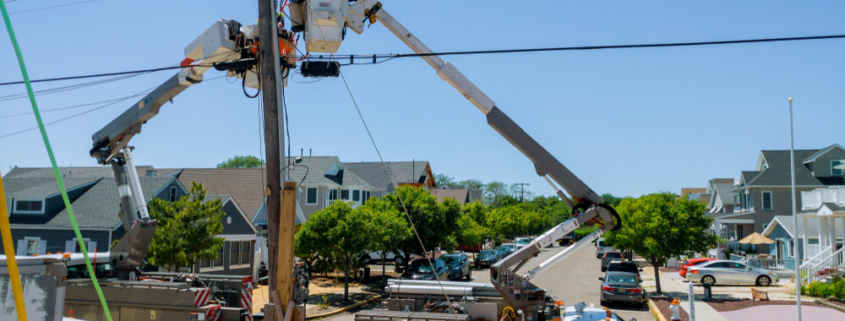What are the Most Dangerous Jobs in America?
For many Americans, the idea of a “bad day at work” might be something along the lines of having to deal with difficult customers, getting reprimanded by their supervisor, or getting stuck in traffic on their way to or from the office. In most occupations, the idea of getting injured at work is usually far from their minds. Although it can happen, and it often does, a workplace injury is usually something that they think “happens to somebody else”.
In some occupations, however, workplace injuries are more the norm than the exception. These are jobs in which people go to work every day knowing that there is at the very least a moderate risk that they will suffer a serious injury. Last month, CNBC published their list of the top 10 most dangerous jobs in America, based on numbers from 2018, the most recent year that we have full statistics for.
There were 5,250 workplace fatalities in 2018, which was a slight increase from the previous year. And many of these deaths were among workers from one of the following occupations:
10. Landscaping, Lawn Service, and Groundskeeping
CNBC lists first-line supervisors of landscapers, groundskeepers, and lawn service personnel as the 10th most dangerous job in the United States, with 20.2 fatalities per 100,000 full-time equivalent workers. Those in this industry spend a lot of time traveling from one jobsite to another, putting them at a higher risk of transportation-related accidents.
9. Construction and Extraction Worker Supervisors
First-line supervisors of construction and extraction workers is listed as the 9th most dangerous occupation in America, with 21 fatalities per 100,000 full-time equivalent workers. About two-thirds of those who were killed in this industry were independent contractors, and most of these fatalities were transportation-related.
8. Structural Iron and Steel Workers
Coming in at 8th on the list of the top 10 most dangerous occupations with 23.6 fatalities per 100,000 full-time equivalent workers are those who install iron and steel elements into building structures during construction. Those in this industry work regularly in high places, and slips, trips, and falls are the most common causes of death.
7. Agricultural Workers
Number 7 on the top 10 list with 24.7 fatalities per 100,000 full-time equivalent workers are farmers, ranchers, and other agricultural workers. Farmers spend a lot of time working outdoors with dangerous machinery and equipment, and some of them travel from one farm to another, putting them at risk of transportation accidents.
6. Transportation Workers
Number six on the list is transportation workers; including commercial truck drivers, company delivery drivers, and traveling sales workers. Among these occupations, there were 26 fatalities per 100,000 full-time equivalent workers, and not surprisingly, the vast majority of these fatalities resulted from transportation-related workplace accidents.
5. Waste and Recyclable Materials Collectors
Another extremely dangerous transportation-related occupation is garbage or waste collector. These workers spend a large percentage of their day with a team traveling from one location to another collecting waste and recyclable materials. They also work year-round, with some team members having to work outside under hazardous weather conditions. There were 44.3 fatalities per 100,000 full-time equivalent workers in the waste industry, making it the fifth most hazardous occupation in the US.
4. Roofers
Roofing is the most dangerous type of construction occupation and fourth most dangerous overall with 51.5 fatalities per 100,000 full-time equivalent workers. Roofers spend almost all of their time on top of residential and commercial buildings either installing or repairing roofs. They typically work multiple stories above the ground, making them highly susceptible to serious slip, trip, and fall injuries. Roofers also have to do a lot of hard physical labor, often in very uncomfortable weather conditions.
3. Airline Pilots and Flight Engineers
Pilots and flight engineers are third on the list of most dangerous occupations with 58.9 fatalities per 100,000 full-time equivalent workers. Not surprisingly, the deaths and serious injuries that occur with this group result from plane crashes, and the majority of these crashes happen in smaller private planes.
2. Fishing Workers
Fishers and other fishing workers come in at number two on the list, with 77.4 fatalities per 100,000 full-time equivalent workers. Fishers work long hours at sea doing hard, physical work, and they are also highly susceptible to slips, trips, and falls, sometimes even falling out of their boat.
1 . Logging Workers
Logging workers top the list of the most dangerous jobs in America. These workers deal with numerous risks; such as falling from high places, being hit by felled trees, and being injured by hazardous or faulty equipment. At 97.6 fatalities per 100,000 full-time workers, the fatality rate among logging workers is 28 times higher than the all-worker average of 3.5 fatalities per 100,000.
Injured in a Workplace Accident? Contact Bailey, Javins, and Carter L.C. for Assistance
If you or a loved one suffered a serious workplace injury or fatality, you may be entitled to compensation over and above workers’ compensation benefits. Some accidents are caused by parties other than the employer, such as a third-party subcontractor, another driver, or the maker of a dangerous or defective product. There may also be instances when a workplace injury is caused by the deliberate actions of the employer, in which case you might be able to sue them directly.
The best place to start is to speak with the experienced workplace injury lawyers at Bailey, Javins, and Carter L.C. Over the past several decades, we have helped countless workers recover the just compensation they deserve, and we are happy to provide a free consultation to take a look at your case. To learn more, message us online or call our office today at (800) 497-0234 or (800) 296-6979. We look forward to serving you!




